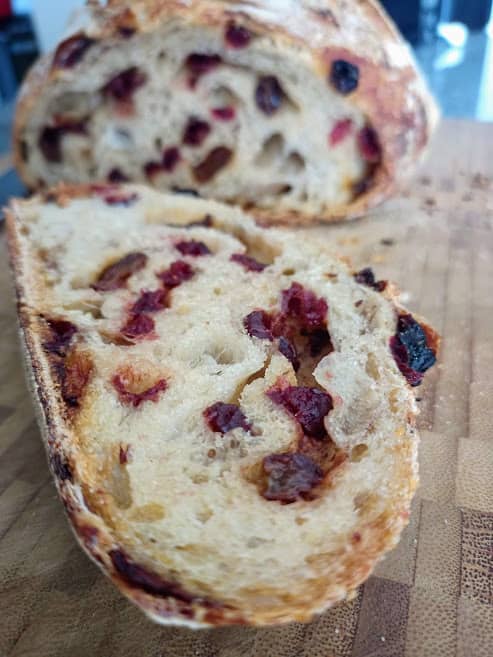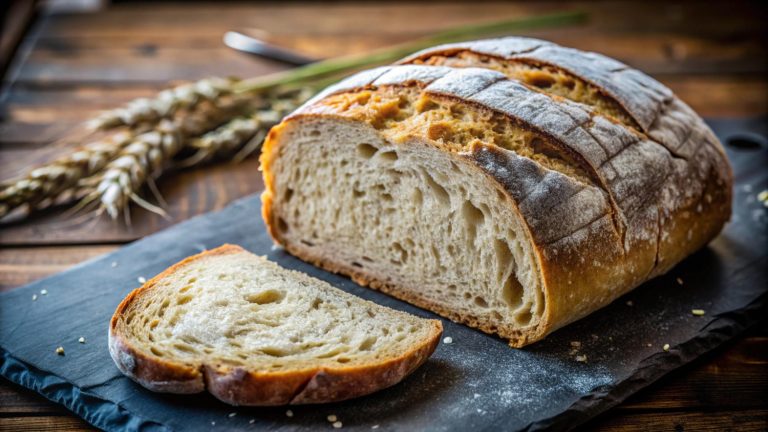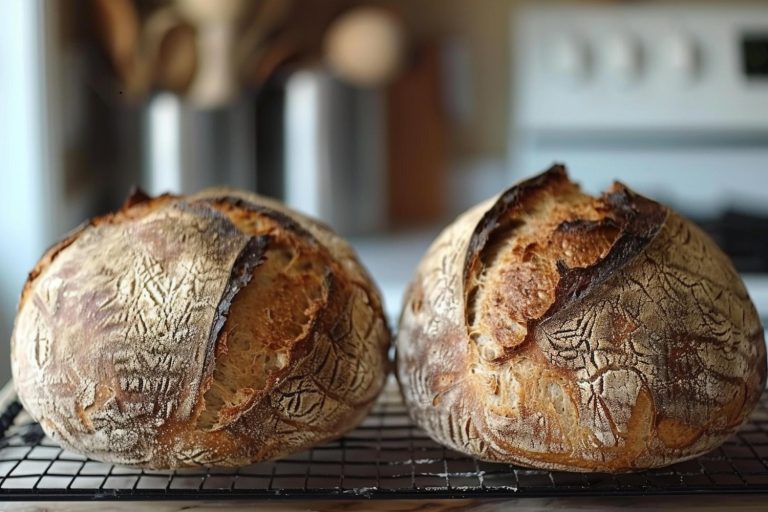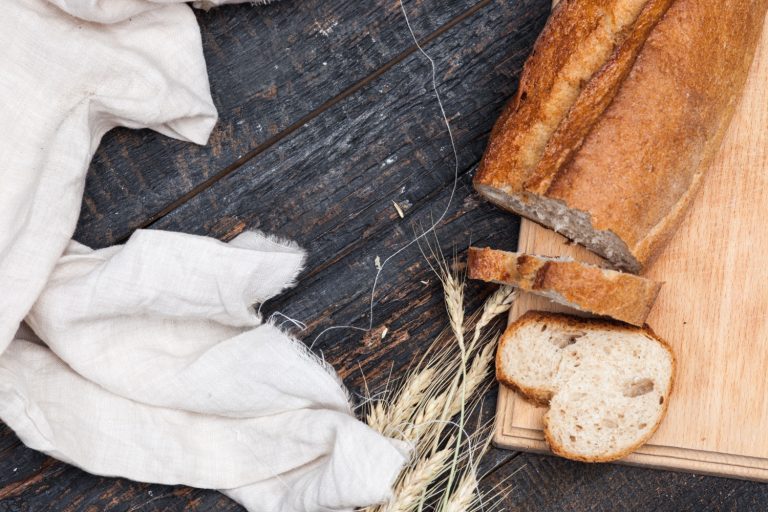How to Create Unique Sourdough Flavors: Top Sourdough Inclusions Ideas
Creative bakers can turn sourdough bread into an artistic expression through exciting inclusion ideas. Carefully selected ingredients can turn simple sourdough into unique, flavorful creations with sweet and savory profiles. These thoughtful additions lift traditional sourdough recipes to new heights and create memorable artisanal breads that make any table unique.
Distinctive flavor combinations emerge as bakers experiment with different ingredients in their sourdough. Classic pairings like jalapeno cheddar and roasted garlic shine alongside Mediterranean-inspired additions such as kalamata olives and sundried tomatoes. The possibilities seem endless. This piece shows you the right techniques for adding ingredients, perfecting your timing, and making vital adjustments that lead to successful sourdough baking with inclusions.
Understanding Sourdough Inclusions
Becoming skilled at adding inclusions to sourdough bread depends on knowing their varieties, advantages, and the right time to add them. Bakers who learn these basic principles can consistently produce delicious flavored sourdough bread and avoid common mistakes.
Types of inclusions
Sourdough inclusions naturally split into two main categories based on their moisture content. Dry inclusions include:
- Nuts and seeds (walnuts, sunflower seeds)
- Dried fruits (raisins, cranberries)
- Hard cheeses
- Dried herbs and spices
Wet inclusions need extra attention because of their moisture content:
- Fresh fruits and vegetables
- Soft cheeses
- Olives
- Fresh herbs
Bakers typically use 20% of the flour weight as their standard measurement for inclusions. Expert bakers might adjust these amounts based on their ingredients and desired results. Flour with higher protein content usually handles more significant inclusions while maintaining the bread’s structure effectively.
Benefits of adding inclusions
Extra ingredients in sourdough bread improve its taste, nutrition, and sensory appeal. These additions create unique flavor combinations and transform the bread’s texture with interesting visual patterns throughout the crumb. For example, cheese creates delightful pockets of flavor, while nuts add a satisfying crunch and boost the protein content.
When to add inclusions
The right timing to add ingredients is significant for the best results. Here’s the recommended sequence:
- Original mix: Add dry ingredients like cocoa powder or spices
- Second or third fold: Incorporate most solid inclusions
- Final shaping: Add delicate ingredients or create swirls
Bakers should add most inclusions during the stretch and fold phase, usually around the second or third fold. The dough needs to develop enough gluten strength before you add ingredients that might affect gluten development.
Wet ingredients need proper dough hydration adjustments. For instance, olives or fresh vegetables require reducing the recipe’s water content by 5-10% to maintain proper dough consistency. Sugar-containing ingredients or fresh fruit might speed up fermentation, so you must closely watch the bulk fermentation time.
Temperature also affects inclusion timing. Temperature-sensitive ingredients like chocolate or certain cheeses need to go in later to prevent melting during fermentation. This approach will give each inclusion its intended texture and enhance the final loaf.
Sweet Sourdough Inclusion Ideas
Adding sweet ingredients elevates ordinary sourdough bread into delightful treats beyond traditional bread and pastry boundaries. Seasonal fruits and decadent chocolate create unique flavor combinations that showcase sourdough’s versatility.
Fruits and berries
Sourdough tastes fantastic with fresh and dried fruits. Fresh berries create delightful bursts of natural sweetness and vibrant color in your bread. Dried fruits add concentrated flavors and a chewy texture to your creation. Here’s a seasonal guide to fruit inclusions:
| Season | Recommended Fruits | Special Considerations |
|---|---|---|
| Spring | Strawberries, Cherries | Pat dry before adding |
| Summer | Blueberries, Raspberries | Use firm berries |
| Fall | Cranberries, Apples | Adjust hydration |
| Winter | Dried fruits, Citrus zest | Soak dried fruits |
Dried fruits need a 30-minute soak in strong black tea or warm water to prevent them from absorbing moisture from the dough. This step becomes essential, especially when your recipe has raisins, cranberries, and chopped apricots. The soaking ensures your fruits are spread evenly throughout the dough and maintain the perfect texture.
Nuts and seeds
Nuts and seeds create nutritional value and textural contrast in sweet sourdough creations. These popular combinations work well:
- Toasted almonds with dried cherries
- Pecans with maple-soaked raisins
- Pumpkin seeds with dried cranberries
- Walnuts with dried figs
Toasting nuts boosts their flavor and will give a crunchy texture. Bakers should let toasted nuts cool completely before adding them to the dough during the second or third fold.
Chocolate and cocoa
Adding chocolate to bread requires specific techniques to get the best results. Dutch-processed cocoa powder needs to bloom in warm oil before you mix it in. This step brings out its flavor and stops dry spots from forming in your bread. Mix coconut oil with cocoa powder until you get a smooth blend.
Your choice of chocolate chunks or chips will significantly affect the bread’s final taste. Dark chocolate adds sophisticated depth, while milk chocolate gives the classic sweet taste. White chocolate works well with berries—white chocolate strawberry or white chocolate raspberry are great examples.
The right time to add chocolate is vital – mix it in during the final fold so it doesn’t melt too much during fermentation. Some bakers create a marbled look by putting chocolate between dough layers during shaping.
Making chocolate-based sourdough means you’ll need to adjust your dough’s moisture. The cocoa powder soaks up water, so adding 2-3% more water helps keep the right dough texture. If you’re using chocolate with fruit, reduce fresh fruit amounts to avoid too much moisture.
Different seasons can spark new flavor combinations. Dark chocolate chips with pumpkin spice work great in autumn, while lemon-white chocolate shines in spring. These clever combinations turn simple sourdough into artisan creations that showcase classic breadmaking skills and new flavor ideas.
Savory Sourdough Inclusion Ideas
Savory ingredients elevate sourdough into aromatic, flavorful loaves that enhance any meal. Mediterranean-inspired combinations and classic flavor pairings create distinctive breads that showcase sourdough baking‘s versatility.
Herbs and spices
Fresh herbs add both aromatic complexity and visual appeal to sourdough. Rosemary brings fragrant pine and citrus notes, especially for spring baking. Skilled bakers often use these proven herb combinations:
- Roasted garlic + fresh rosemary: Creates intense flavors that blend perfectly
- Oregano + mint + black pepper: Brings Mediterranean-inspired complexity
- Fresh basil + sundried tomatoes: Delivers classic Italian notes
The best results come from using about 1 cup of fresh herbs (measured before chopping) to create beautiful green swirls throughout the dough. Fresh varieties work best, though dried herbs can be substituted to achieve similar flavors and visual impact.
Cheeses
Adding cheese creates delightful pockets of flavor that enhance your bread’s texture. Different cheese varieties are a great way to get unique characteristics:
| Cheese Type | Characteristics | Best Combinations |
|---|---|---|
| Sharp Cheddar | Bold, tangy flavor | Jalapeños, garlic |
| Asiago/Gruyere | Sweet, nutty undertones | Rosemary, roasted garlic |
| Feta | The salty, crumbly texture | Sundried tomatoes, oregano |
Essential preparation tips: Freshly shredded cheese works better than pre-shredded varieties because anti-caking agents can affect the texture. Soft cheeses like feta need a quick pat dry before mixing to manage moisture. Hard cheese cubes create more distinct flavor pockets in the crumb than shredded versions.
Vegetables
You need to manage moisture carefully when adding vegetables to your bread. Roasted vegetables work better than raw ones because they pack more flavor without extra moisture. Here are some popular choices:
Roasted garlic turns sweet and caramelized, which perfectly complements sourdough’s natural tang. You should roast whole heads of garlic ahead of time because raw garlic can prevent proper fermentation and prevent the dough from rising.
Roasted red peppers bring beautiful color and sweet flavor, but you must prepare them properly. You can replace up to 50% of the water in your recipe with pepper puree. Start with a 30% replacement in your original attempts. This method creates stunning color and keeps the dough structure intact.
Sundried tomatoes and fresh basil combine to make Mediterranean-style loaves. If you use oil-packed tomatoes, drain and pat them dry before adding them to your dough. Caramelized onions add sweet, complex flavors that work, especially with French onion-inspired combinations.
To add vegetables successfully:
- Remove excess moisture before adding
- Add during the second-to-last stretch and fold
- Distribute evenly throughout the dough
- Adjust overall hydration based on your vegetable’s moisture content
Advanced combinations like Greek-inspired loaves with feta, olives, and oregano show how multiple savory ingredients blend. These complex flavor profiles need longer fermentation times to develop and mix thoroughly.
Tips for Successful Sourdough Inclusions
Technical precision and careful attention to detail create delicious sourdough with perfect inclusions. Bakers who become skilled at these core techniques consistently produce exceptional loaves. Their bread features well-distributed ingredients and an ideal texture.
Adjusting hydration
Dough hydration is vital when you work with inclusions because different ingredients can substantially affect moisture content. The simple principle follows this adjustment guide:
| Inclusion Type | Hydration Adjustment |
|---|---|
| Wet (olives, fresh vegetables) | Reduce water by 5-10% |
| Dried (nuts, seeds) | No adjustment needed |
| Soaked dried fruit | Reduce water by 3-5% |
| High-moisture cheese | Reduce water by 5-7% |
Baker’s Percentage Rule: To get optimal results, bakers should calculate inclusions at 20% of the total flour weight. For example, you should add 88g of inclusions to 440g of flour. This ratio will give proper dough structure and adequate flavor distribution.
Proper distribution
The right timing and technique ensure an even distribution of inclusions throughout the dough. The third fold offers the best moment to add most ingredients because it provides the following:
- Enough gluten development before adding ingredients
- Sufficient time to distribute evenly
- The proper dough strength maintenance
- Protection against too much deflation
- The best fermentation conditions
Bakers should squeeze ingredients into the dough using the same technique as salt addition. The distribution might look uneven initially, but additional folds help the ingredients merge naturally throughout the dough structure.
Baking considerations
Temperature management occurs especially when you have inclusion-rich sourdough. Key adjustments include:
- Internal temperature monitoring (190°F to 200°F for proper doneness)
- Extended baking times for moisture-rich inclusions
- Temperature reduction for sugar-containing additions
- Position adjustment for bottom heat management
Bakers need longer baking times to reach the proper internal temperature with high-moisture ingredients. A thermometer is a reliable way to check if your bread is fully baked, especially when you add fruits or vegetables.
Your sourdough’s temperature distribution needs extra attention when adding inclusions. You might need to reduce the base heat to avoid burning, especially with ingredients that contain sugar or tend to caramelize. Moving the Dutch oven or baking vessel higher up in the oven helps control bottom heat better.
Inclusions make fermentation monitoring even more crucial since some ingredients speed up or slow the process. Additions with sugar can speed up fermentation, while salty ingredients slow it down. Watch for typical signs like increased dough volume and surface texture, and adjust your timing based on what you see.
These moisture management strategies work best with wet ingredients:
- Pat ingredients dry before incorporation
- Reduce overall recipe hydration proportionally
- Account for moisture release during baking
- Monitor dough consistency during mixing
Your sourdough inclusions’ success depends on good preparation. Room-temperature ingredients and well-drained wet components make a big difference. This careful prep helps maintain proper dough structure and keeps fermentation consistent throughout the bulk rise.
Conclusion
Becoming skilled at sourdough inclusions creates endless ways to make unique, flavorful breads that blend traditional methods with creative ideas. Success needs careful attention to moisture management, the right timing for folding, and proper temperature control during baking. These technical aspects and an intelligent selection of ingredients like fresh herbs, roasted vegetables, dried fruits, and nuts help bakers create special loaves. These loaves stay structurally sound and deliver fantastic flavor combinations.
Every sourdough creation allows you to discover new flavors using proven baking methods. You can raise your bread and pizza skills with an authentic artisanal sourdough starter from The Yeast We Can Do. Our premium starter helps you make exceptional bread and pizza with perfect tangy flavor and signature crust – email john@theyeastwecando.com to get yours. With the proper techniques and quality ingredients, bakers can challenge their creativity with sweet and savory additions while keeping sourdough’s authentic character unique.
FAQs
What can be added to sourdough to enhance its flavor and texture?
You can enrich your basic sourdough boule by incorporating various inclusions such as dried fruits, seeds, nuts, cheeses, herbs, and even olives. These additions add flavor and create an exciting texture to the classic loaf.
How can I make my sourdough taste more sour?
To achieve a more pronounced sour flavor in your sourdough, consider maintaining your starter at a lower hydration level, which involves using more flour than water. Additionally, using whole-grain flour can enhance sourness as these are preferred by acid-producing bacteria. Another tip is to retain the hooch, or the brown liquid layer that forms on top of a hungry sourdough starter, instead of pouring it off.
What are the primary flavor components of sourdough bread?
Sourdough bread’s distinctive taste primarily comes from salt, added directly to the dough, and the acetic and lactic acids produced during fermentation.
What types of inclusions are suitable for adding to bread?
When it comes to bread, especially artisan sourdough, you can experiment with various inclusions like fruits, nuts, cheese, herbs, and vegetables. Considering the additional moisture these inclusions might introduce to the dough is essential.
What are some recommended mix-ins for beginners of sourdough?
Starting with ingredients like cheeses, onions, or even cocoa powder can be delightful if you’re new to experimenting with sourdough inclusions. It’s helpful to share experiences regarding what mix-ins work well, which ones to avoid, and the right proportions to use to maintain the dough’s integrity.






